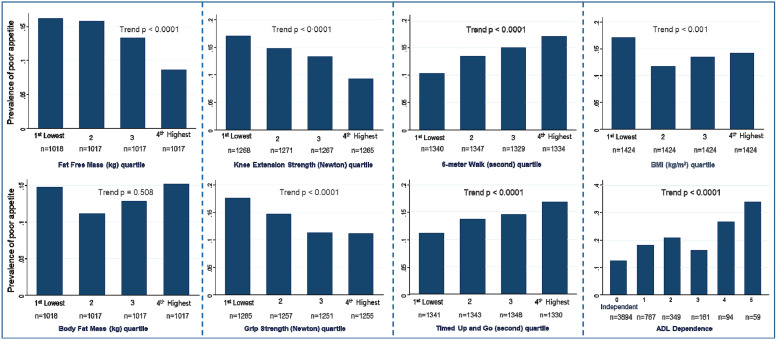Fig. 1.
Prevalence of a poor appetite or ability to eat according to the quartile levels* of body composition, muscle strength, physical function, and ADL dependence score amongst the AGES-Reykjavik Study cohort. *Cut-off points for quartile levels of each variable: fat-free mass (kg, < 44.5, 44.6–52.1, 52.2–62.2, 62.2 +), fat mass (kg, < 16.4, 16.5–21.4, 21.5–26.5, 26.5 +), BMI: body mass index (kg/m2, < 24.03, 24.03–26.65, 26.66–29.55, 29.56 +), knee extension strength (N, < 231.8, 231.9–300.3, 300.4–390.4, 39.05 +), grip strength (N, < 215.4, 215.8–274.6, 274.7–367.4, 367.9 +), 6-m walk (s, < 5.59, 5.60–6.37, 6.38–7.47, 7.48 +), and timed up and go (s, < 10.24, 10.25–11.76, 11.77–13.90, 13.91 +). ADL dependence (0 = independent, 1–5 = number of ADL items with any difficulty or unable to perform). ADL activities of daily living

